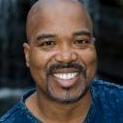-
Posts
2,404 -
Joined
-
Last visited
-
Days Won
91
richardmurray's Achievements
Single Status Update
See all updates by richardmurray
-

Why Plots Fail
September 26, 2022 by Tiffany Yates Martin
Many authors embark on a new manuscript with one of two common inspirations: a great idea for a plot, or a fascinating character and situation.
Both can be good springboards for story, yet without more development, each may result in stories that peter out, dead end, or get lost in rabbit holes (especially during the breakneck pace of NaNo).
Plots most commonly fail when:
- they’re approached as an isolated element of story, a series of interesting events for authors to plug their characters into, or
- when interesting characters are randomly loosed into an intriguing situation with no specific destination or purpose.
Characters must take action, but action is not plot, and plot is not story.
The role of plot in story
The basic definition of story is a character pursues something he desperately wants, and he is changed by that pursuit and his success or failure in achieving his goal. Plot is simply the road the character travels on that journey.
I often reduce it to a simple formula:
Point A + Plot = Point B
In other words, story equals character arc plus plot.
Creating an elaborately structured plot and calling it story is like mapping a trip and calling it a vacation. What makes it complete is the character’s experience of it. Character drives plot, not the other way around.
Don’t panic, plotters. That doesn’t mean you can’t map out your plot ahead of time. And fear not, pantsers—it doesn’t mean you have to painstakingly develop or outline the whole story before you begin.
But creating compelling, cohesive stories does mean considering how these two crucial story elements work together.
Know what your character wants
Before you can put a character in motion, you have to know where she is headed and why. What drives your characters is the engine and the fuel for the actions they take and fail to take in the course of the story, the reason they—and we—take this journey.
Your character’s goal(s) and motivations determine those actions, as well as her reactions, inaction, and interaction; they dictate every choice she makes that pushes her along the plot. It’s essential to understand at least these basics about your characters before trying to put them in motion.
In director Baz Luhrmann’s recent movie Elvis, the titular character’s main motivation is evident from almost the first scene: Elvis loves music, especially blues and gospel. It literally moves him—in an early scene he wanders into a tent revival and his body starts shaking and swaying seemingly without his volition.
That dictates his main goal—to make his own music—which is the propulsive force for every subsequent action he takes (or doesn’t take) in the course of the story, starting with recording his own version of the one of the songs by a local blues musician that fascinated him, accepting Colonel Tom Parker’s offer to tour him on the carnival circuit, and every subsequent choice he makes.
But characters may have other goals and motivations as well, and will also continue to evolve as the story develops and as the author’s understanding of them deepens and grows—which will also affect the choices they make and the paths they take.
Elvis’s desire to pursue his music begins to morph early in the story as he is seduced into a new goal—fame and fortune—which evolves from his deeper motivation: a desperate need for love.
These are powerful and universal desires, the kind many readers can relate to. But they’re vague—another reason plots can falter or lose focus.
Create tangible as well as intangible goals
Pinning your character’s intangible longings to a concrete goal gives readers something to root for—or against—and tells us when the character has “won” (or lost).
Without that, momentum may stall, like a footrace with no definitive finish line for runners to orient themselves toward or to tell them when they’ve reached it.
Or the story may lose cohesion and feel episodic: “This happens…and then this happens…and then this happens…” but because the plot has become disconnected from the character arc, the actions lack meaning or impact.
Tie your character’s more generalized motivations to some specific, tangible “brass ring” that represents them.
For Luhrmann’s movie version of Elvis, each element of what drives him is pinned to a definitive representation of that longing:
- His love of music—his kind of music—is tangibly represented by a Christmas special where Colonel Parker demands he sing sanitized traditional carols and not swivel those hips, as well as the broader concrete representation of Parker’s pushing him to shift his career to inoffensive, bland music, against a new manager who wants to encourage Elvis to play his own kind of music and swivel at will. This sets up a clear story conflict that serves as a powerful propulsive force.
- His desire for fame and fortune is represented by specific, tangible goals that Elvis associates with money—wanting to buy his mother a pink Cadillac, Graceland, his own plane, etc.—and popularity and acclaim, like bigger venues, Hollywood movies, and eventually a European tour.
- His longing for love is represented by his profound devotion to his mother, Gladys (and to a smaller degree his father); the Colonel; Priscilla and Lisa Marie; and, as the Colonel himself reminds viewers throughout, the fans. Elvis thrives on attention and confuses it with love—and that motivates every decision he makes in the story.
Defining what your character wants and why allows you to grow a cohesive, integrated plot as you throw obstacles in the path between your characters and what they want, and let their “why”—what drives them toward that goal—dictate the choices they make. Each choice sends them on the next step of the path as your plot develops organically, always driven by the characters.
Know how your character changes
One final reason plots may fail is that the character’s point B—how they change by the end of the story, externally, internally, or both—is not directly related to or a result of what happened to them in the course of it.
But if you let their goal and motivation dictate their actions and behavior at every decision point, then readers will see on the page, step by step, how your character moves along her arc: how each challenge she faces, every choice she makes, affects her, shifts her perspective, and causes her growth or change.
This direct, intrinsic relationship between plot and character—the character’s struggles, choices, longings, and goals that drive the actions they take in the course of the plot—is what makes for dynamic stories that feel organic, cohesive, and satisfying to readers.
Article
https://www.janefriedman.com/why-plots-fail/My Thoughts
the following is a little aside. but, what do you think about short stories that contain key tenets or rules in a world that can prepare an author in making a longer story in the same world ? I use as an example. ursula leguin's earthsea. she wrote three short stories that like any good short story stand on their own but also displayed key principles of the world in the later books. I have a larger work I am working on, the plot is not finished, but that is based on what I want a few major characters to do at or near the end and it is an important choice. But a smaller story, in the same world , is near complete, The characters , The plot, the story is done. The ending resolution even relates to where I want the larger story to go. And some key rules are displayed. Maybe some plots fail because authors are unwilling to give glimpses, ala short stories, into the world first? I will be blunt, I never wrote a short story at the same time working on a larger one in the same world. Maybe if plotters:) or pantsters step back from the big book and make an intentional short story in the same world, it can help them with the cohesiveness between the plot side characters lives in the longer story.
Writers of the future talk




.thumb.jpg.afc88dfee9cd2927de0c440601caac13.jpg)



.thumb.jpg.ed52910791d00308abb8c218695bec88.jpg)
